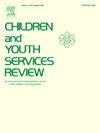Associations between screen use, learning and concentration among children and young people in western countries: a scoping review
IF 1.7
2区 社会学
Q1 FAMILY STUDIES
引用次数: 0
Abstract
Background
Screens have become an integral part of the daily lives of children and young people and play a crucial role in both educational and leisure activities. The aim of this scoping review was to explore and map the existing evidence on the potential influence of recreational screen use on concentration ability and learning in individuals aged 6–25 years.
Methods
A search of the literature published between 2013 and 2023 was performed in three databases (PsycINFO, CINAHL, and Web of Science). The search was conducted using relevant search terms related to screen use, concentration and learning, and children, adolescents, and young adults. Inclusion criteria included reviews, meta-analyses, cohort studies, cross-sectional studies, and experimental studies. Data was synthesized using thematic analysis
Results
A total of 33 original studies and reviews were included and encompassed a close to equal distribution in terms of age groups. Of these studies and reviews, 33 % examined screen time, 58 % media multitasking, 27 % gaming, and 6 % television viewing. The results of the studies indicated that excessive screen time was associated with concentration difficulties, which suggests that the associations are bidirectional. Some studies identified poor sleep quality, influenced by pre-bedtime screen use, as a mediating factor. Recreational media multitasking in school settings was consistently correlated with inferior learning outcomes, whereas studies on television use and gaming showed inconsistent results.
Conclusion
Findings from this scoping review suggest a small yet consistent correlation between screen use and concentration difficulties among children and young people. Further research is needed to establish causal relations and to examine how different aspects and uses of screens affect concentration.
西方国家儿童和青少年屏幕使用、学习和注意力集中之间的关系:一项范围审查
屏幕已经成为儿童和青少年日常生活中不可或缺的一部分,在教育和休闲活动中发挥着至关重要的作用。本综述的目的是探索和绘制关于娱乐性屏幕使用对6-25岁个体集中能力和学习的潜在影响的现有证据。方法在PsycINFO、CINAHL和Web of Science 3个数据库中检索2013 - 2023年发表的文献。这项研究使用了与屏幕使用、注意力集中和学习、儿童、青少年和年轻人有关的相关搜索词。纳入标准包括综述、荟萃分析、队列研究、横断面研究和实验研究。结果共纳入33项原始研究和综述,按年龄组分布接近相等。在这些研究和评论中,33%的调查对象是屏幕时间,58%的调查对象是多任务处理媒体,27%的调查对象是玩游戏,6%的调查对象是看电视。研究结果表明,过多的屏幕时间与注意力集中困难有关,这表明这种联系是双向的。一些研究发现,受睡前屏幕使用影响的睡眠质量差是一个中介因素。在学校环境中,娱乐媒体的多任务处理始终与较差的学习成绩相关,而对电视使用和游戏的研究却显示出不一致的结果。结论:本综述的结果表明,儿童和青少年的屏幕使用与注意力集中困难之间存在虽小但一致的相关性。需要进一步的研究来建立因果关系,并检查屏幕的不同方面和使用如何影响注意力。
本文章由计算机程序翻译,如有差异,请以英文原文为准。
求助全文
约1分钟内获得全文
求助全文
来源期刊

Children and Youth Services Review
Multiple-
CiteScore
6.30
自引率
6.10%
发文量
303
期刊介绍:
Children and Youth Services Review is an interdisciplinary forum for critical scholarship regarding service programs for children and youth. The journal will publish full-length articles, current research and policy notes, and book reviews.
 求助内容:
求助内容: 应助结果提醒方式:
应助结果提醒方式:


